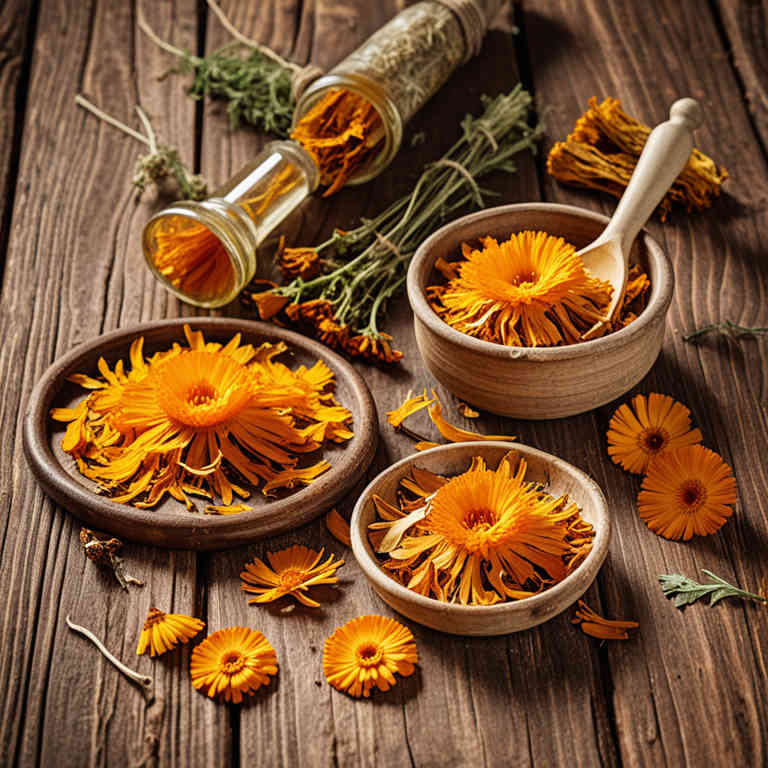Calendula officinalis decoction for medicinal use

Calendula officinalis decoction is a preparation made by simmering the dried flowers of the Calendula plant in water.
It is commonly used in herbalism for its anti-inflammatory, antiseptic, and wound-healing properties. This decoction can be applied topically to soothe skin irritations, eczema, and minor burns. It is also used internally to support digestion and reduce inflammation in the gastrointestinal tract.
Its versatility makes it a popular remedy in both traditional and modern herbal practices.
Uses
Calendula officinalis decoction has been used to treat skin conditions and promote wound healing for centuries.
Historically, it was valued in ancient Egypt, Greece, and Rome for its anti-inflammatory and antiseptic properties. Traditional herbal medicine systems, such as Ayurveda and Chinese medicine, have also incorporated calendula decoctions for their soothing effects on the skin. In modern times, it is commonly used topically to address eczema, psoriasis, and minor burns.
Its continued use reflects both its historical significance and its validated therapeutic benefits in contemporary herbal and alternative medicine practices.
Benefits
Calendula officinalis decoction has health benefits such as promoting skin healing, reducing inflammation, and supporting digestive health.
It is often used topically to treat wounds, burns, and skin irritations due to its antimicrobial and anti-inflammatory properties. Internally, it may help alleviate symptoms of digestive disorders like indigestion and gastritis. The decoction is also believed to have mild antispasmodic effects that can soothe gastrointestinal discomfort.
Overall, it is a versatile herbal preparation valued for its soothing and restorative properties.
Constituents
Calendula officinalis decoction active constituents include flavonoids, triterpenoids, carotenoids, and essential oils.
These compounds contribute to the decoction's anti-inflammatory, antimicrobial, and wound-healing properties. Flavonoids help reduce oxidative stress and support skin health. Triterpenoids may promote tissue regeneration and soothe irritations.
Carotenoids and essential oils provide additional antioxidant and soothing effects, making the decoction beneficial for topical applications such as treating minor burns, eczema, and skin infections.
Preparation
To make Calendula officinalis decoction, start by gathering 1 to 2 tablespoons of dried Calendula flowers and place them in a heatproof container.
Add 1 cup of water and bring the mixture to a boil over medium heat. Reduce the heat and let it simmer for 15 to 20 minutes, allowing the active compounds to infuse into the water. Strain the liquid through a fine mesh strainer or cheesecloth to remove the plant material.
Allow the decoction to cool slightly before using it topically or as directed by a healthcare professional.
Side Effects
Calendula officinalis decoction may lead to gastrointestinal discomfort, including nausea, vomiting, or diarrhea, especially when taken in high doses.
It can also cause allergic reactions in individuals sensitive to plants in the Asteraceae family, such as ragweed. Long-term use might interfere with certain medications, particularly those affecting the liver or blood clotting. Some studies suggest it may be safe for topical use but caution is needed with internal consumption.
Always consult a healthcare provider before using this preparation, especially for prolonged periods or in combination with other treatments.